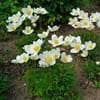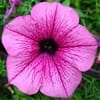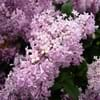Life Span
Perennial
Perennial
Type
Tender Perennial
Flowering Plants, Fruits, Herbs, Shrubs
Origin
Mediterranean
Australia, South America
Types
Blue Anemone, Greek Windflower, Carolina Anemone, Chinese Anemone
Adams Elderberry, Black Beauty Elderberry, Black Lace Elderberry, Johns Elderberry, Nova Elderberry
Habitat
Wild
Farms, Homesteads, Near organic waste disposal
USDA Hardiness Zone
8-12
4-8
Sunset Zone
4, 5, 6, 7, 8, 9, 10, 11, 12, 13, 14, 15, 16, 17, 18, 19, 20, 21, 22, 23, 24
2a, 2b, 3a, 3b, 4, 5, 6, 7, 14, 15, 16, 17
Habit
Clump-Forming
Upright/Erect
Minimum Height
Not Available
Minimum Width
Not Available
Flower Color
Sky Blue
White
Flower Color Modifier
Not Available
Not Available
Fruit Color
Not Available
Purple, Red
Leaf Color in Spring
Green
Green
Leaf Color in Summer
Yellow, Green
Green
Leaf Color in Fall
Not Available
Yellow green
Leaf Color in Winter
Not Available
Not Available
Leaf Shape
Compound
Compound
Plant Season
Spring
Early Spring
Sunlight
Partial Sun, Partial shade
Full Sun, Part sun
Type of Soil
Loam
Loamy, Sandy, Well drained
The pH of Soil
Acidic, Neutral
Slightly Acidic
Soil Drainage
Average
Average
Bloom Time
Early Spring, Spring, Late Spring, Early Summer
Early Spring, Spring
Tolerances
Salt
Pollution
Where to Plant?
Ground, Pot
Ground
How to Plant?
Seedlings
Grafting, Seedlings
Plant Maintenance
Medium
Medium
Watering Requirements
Medium, Prefer drip-irrigation instead of Over-head watering, Use Mulches to help prevent water loss during hot and windy weather, Water Deeply
Requires regular watering, Use Mulches to help prevent water loss during hot and windy weather
In Summer
Lots of watering
Lots of watering
In Spring
Moderate
Moderate
In Winter
Average Water
Average Water
Soil pH
Acidic, Neutral
Slightly Acidic
Soil Type
Loam
Loamy, Sandy, Well drained
Soil Drainage Capacity
Average
Average
Sun Exposure
Partial Sun, Partial shade
Full Sun, Part sun
Pruning
Prune prior to new growth, Remove dead or diseased plant parts, Remove deadheads
Cut or pinch the stems, No pruning needed in the early stages, Prune for shortening long shoots, Prune if you want to improve plant shape, Prune in winter, Prune ocassionally, Remove deadheads
Fertilizers
All-Purpose Liquid Fertilizer
All-Purpose Liquid Fertilizer
Pests and Diseases
Botrytis collar rot, Crown gall, Cucumber mosaic, Downy mildew, Impatiens necrotic spot, Leaf curl, Phytophthora, Rhizoctonia crown rot, Root rot, Rust, Sclerotinia blight, Southern blight
Canker, Leaf spot, Powdery mildew, Stem spot, Tomato Ringspot Virus
Plant Tolerance
Drought
Drought
Flower Petal Number
Single
Single
Foliage Texture
Fine
Medium
Foliage Sheen
Matte
Matte
Attracts
Not Available
Birds
Allergy
Skin irritation
Diarrhea, Nausea, Vomiting
Aesthetic Uses
Not Used For Aesthetic Purpose
Not Used For Aesthetic Purpose
Beauty Benefits
Not Available
Not Available
Environmental Uses
Air purification
Air purification
Medicinal Uses
Asthma, Cough, Gout, Menstrual Disorders, Stomach pain
constipation, Fever, Heart problems, High cholestrol, HIV/AIDS, Nerve pain, swine flu
Part of Plant Used
Flowers, Leaves
Flowers, Fruits
Other Uses
Not Available
Not Available
Used As Indoor Plant
No
No
Used As Outdoor Plant
Yes
Yes
Garden Design
Bedding Plant, Container, Mixed Border, Rock Garden / Wall, Wildflower
Not Available
Botanical Name
ANEMONE 'Harmony Blue'( HARMONY SERIES)
Sambucus nigra
Common Name
Anemone, Harmony Blue Anemone
Elderberry
In Hindi
रत्नज्योति
Elderberry
In German
Anemone
Holunderbeere
In Greek
ανεμώνη
Elderberry
In Portuguese
Relutantemente
Sabugueiro
In Polish
Zawilec
Bez czarny
In Latin
VivoSocial
Elderberry
Phylum
Magnoliophyta
Magnoliophyta
Class
Magnoliopsida
Magnoliopsida
Order
Ranunculales
Dipsacales
Family
Ranunculaceae
Adoxaceae
Clade
Not Available
Angiosperms, Asterids, Eudicots
Tribe
Not Available
Not Available
Subfamily
Not Available
Not Available
Season and Care of Anemone and Elderberry
Season and care of Anemone and Elderberry is important to know. While considering everything about Anemone and Elderberry Care, growing season is an essential factor. Anemone season is Spring and Elderberry season is Spring. The type of soil for Anemone is Loam and for Elderberry is Loamy, Sandy, Well drained while the PH of soil for Anemone is Acidic, Neutral and for Elderberry is Slightly Acidic.
Anemone and Elderberry Physical Information
Anemone and Elderberry physical information is very important for comparison. Anemone height is Not Available and width Not Available whereas Elderberry height is 9.00 cm and width 8.00 cm. The color specification of Anemone and Elderberry are as follows:
Anemone flower color: Sky Blue
Anemone leaf color: Green
Elderberry flower color: White
- Elderberry leaf color: Green
Care of Anemone and Elderberry
Care of Anemone and Elderberry include pruning, fertilizers, watering etc. Anemone pruning is done Prune prior to new growth, Remove dead or diseased plant parts and Remove deadheads and Elderberry pruning is done Cut or pinch the stems, No pruning needed in the early stages, Prune for shortening long shoots, Prune if you want to improve plant shape, Prune in winter, Prune ocassionally and Remove deadheads. In summer Anemone needs Lots of watering and in winter, it needs Average Water. Whereas, in summer Elderberry needs Lots of watering and in winter, it needs Average Water.





